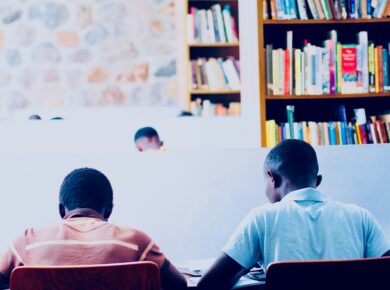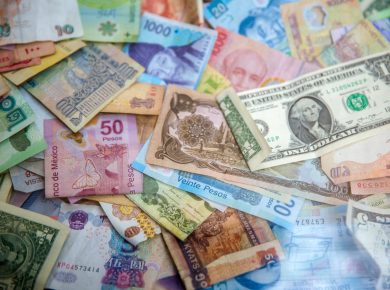A discourse on places and ways by which instructional materials can be acquired is considered relevant in the reality of economic hardship being experienced by the nation.
In this regard, the focus of our discussion shall be on instructional materials by design and those by utilisation.
Instructional materials, by design, are those that genuinely provide for instructional materials through utilisation.
However, refer to those devices which are not provided for instructional purposes but that a teacher makes use of in the process of instruction, especially if they are found to be good for information dissemination.
Examples of such media are posters, calendars, locations, resources, persons, etc.
There are several sources from which schools and learning institutions can acquire or obtain instructional materials. The following sources are discussed below.
Direct Purchase
This is buying the materials. The locations of materials to be acquired through this source are the industries where the materials are manufactured or their agents.
All that is required is for the user to approach the industry/agent for the necessary transactions that can facilitate the direct purchase. If the company is based abroad, the necessary ordering procedures must be followed to get the material(s) procured.
Information as to which company produces what could be obtained through the reading of relevant literature, acquaintance with a similar product in a sister institution, getting in contact with manuals/brochures, newspapers/television advertisements, etc.
Should the choice of materials acquisition be through this source, such factors as topic, objectives, scope, methodology of use, the complexity of the materials, etc., of the manufacturer must be seen to be similar to those of the target audience for which the material(s) are to be purchased?
Materials from the source include charts, overhead projectors, opaque projectors, video players, TV sets, filmstrips, etc.
Improvisation
Through the efforts of both the teacher and the learner, different kinds of instructional materials can be produced using local materials. Local artisans can be contacted to get instructional materials produced.
Materials from this source include charts, maps, pictures, slides, chalkboards, flannel graphs, bullet boards, magnetic boards, instructional games, models, and mock-ups.
Loans
This refers to a situation whereby a workable agreement is reached between two or more schools or learning resource centres to exchange instructional materials for a specified time or period.
This is known as an inter-instructional materials loan, which could also be worked out between two departments, school units, or sections in a school system.
Under these arrangements, conditions to be followed to facilitate the workability of the system should be spelt out.
A register should be kept to indicate such items as the name of the borrower, institution, date, condition of the materials to be borrowed, date of return, condition of the materials on return, the signature of the borrower, and the name and signature of the officer who authorised the release of the materials.
Donation
Instructional materials can be donated to schools, or learning Resources Centres (LRC) by organisations (Local/foreign individuals and/or manufacturers.
Some of these materials can be solicited by contacting the donors, while free or sample models can be sent out for trial testing. Schools could increase the volume of materials acquisition through this means.
Every teacher is expected to be resourceful in a world of rapid acceleration change brought about by the application of science and technology.
The immediate and distant communities of the school are sources from which instructional materials can be tapped to improve the quality of classroom instruction.
Museums, Zoological and Botanical gardens, Media houses, Media ccentcentresfactories/industries are ready-made sources of information that teachers can effectively utilise.
How to use instructional materials correctly
It is common to notice some wrong approaches in the way teachers use instructional materials. This aspect of the chapter is devoted to such mistakes, a suggestions are provided.
Common wrong usage and correction
Time factor
Some teachers do not use the prepared instructional materials at the appropriate time. As we emphasise correct timing in the way we ask questions during teaching-learning situations, the use of instructional materials must be properly timed.
The whole duration of the lesson
It is erroneous on the part of the teacher to believe that instructional materials are only useful to start a lesson. They could be used throughout a lesson.
A skilful teacher can use instructional materials not only to introduce the lesson but also to use them during the presentation and evaluation stages of the lesson.
It should be emphasised that when instructional materials are used to introduce a lesson, attention-catching comments, questions, and explanations should be provided.
However, during the process of lesson presentation, the teacher can refer to the prepared materials for illustrative purposes.
The teacher needs to know that process utilisation of instructional material in this way calls for deep analytical consideration of appropriate materials to illustrate each of the various instructional steps, as in the lesson note prepared for the lesson.
Thus, they emphasise the use of a variety of instructional materials in a manner that will improve the instructional process.
During evaluation
The prepared instructional materials could be delayed and used at the end of the lesson when the teacher is evaluating the entire teaching-learning process. Most student teachers find it very difficult to use the materials to evaluate the outcome of instruction.
In subjects like Biology, Chemistry, History, Integrated Science, and Geography that will involve the use of diagrams and charts, the teacher, having used a fully labelled chart during the presentation stage, can have another diagram having similar features but not labelled to evaluate the lesson (Salawu, et al. 1994)
On the other hand, the failure of the pupils to respond positively to the question(s) of the teacher could necessitate referring to the materials already used during the presentation.
However, the teacher should just guide the pupils by directing them to the appropriate and relevant part of the instructional materials.
The teacher should note that the use of instructional material in this way is not to enable the teacher to answer the question by himself, but to assist the pupils to answer questions.
Part usage of instructional materials
Another noticeable error in the use of instructional materials is what (Salawu et a, 1994b) described as partial usage of instructional materials.
The problem is common in a situation where the student-teacher prepares too many materials to teach a particular topic. Failure to use all the prepared materials may be due to a lack of proper planning.
Arising from this problem may be a failure on the teachers’ part to achieve all the stated instructional objectives, or that some aspects of the topic are better taught than others.
To avoid this mistake, student-teachers are advised to be careful in their selection of instructional materials for their teaching. Prepare only those that could be adequately utilised with consideration for the duration of a lesson.
Decision making
One other mistake emanates from deciding on whether the instructional materials, especially ‘graphic media,’ should be hung permanently or be moved about the class, fixed onto his chest.
There is no best approach as regards movable and stationary use of instructional materials. All a teacher should consider are such factors as the boldness of the material(s), the quantity available versus the size, etc.
Overutilization
On a final note, as much as possible, you should avoid committing the mistake of over-utilising instructional materials on one hand and under-utilising them on the other hand.
Over-utilisation of instructional materials implies making use of a medium to do an instructional task that can be more effectively done by another medium (Adewoyin, 1991).
Underutilization, according to Salawu et al (1994c), cc urs when a medium is not used to its utmost capabilities. Read the similar post on this page.










